Digital Introduction |
|||||
Case M. |
|||||
2.1 Administer System Settings |
|||||
In this section, you will be guided on how to effectively set up the system for your organization. We will cover how to add company information and establish appropriate configurations related to language support, password and security settings, user permissions (Profiles), and management based on whether the system includes multiple company entities or external stakeholders (Workspace).
Establishing a Strong Foundation in the System
The AM System provides a wide range of configuration options to tailor the system to your organization's specific needs. As an administrator, you set the parameters to ensure that both you and your team can operate effectively and accurately every time.
To lay a solid foundation, consider the following key questions:
- What languages will our organization require within the system?
- What level of security do we need regarding system access?
- What roles will users have within the system, and what permissions should each role entail?
System Settings Step by Step
Step 1 - Company Information
To establish your company’s unique identity within the system, begin by adding your company information and logo. This not only creates a professional impression but also aids users in recognizing the system easily.
When entering your company information, keep the following points in mind:
- Upload a high-quality version of your logo to ensure clear visibility. The logo will be stored as central metadata and can be displayed in document headers and case prints. For optimal results, use a JPEG with dimensions of 400 x 800 pixels.
- Provide the correct legal name and registration number of your organization.
- Include contact details such as your address, telephone number, and email address.

Step 2 - Password & Security
As an administrator, you have the capability to configure essential security features to ensure robust protection for your system. Under the Password/Security settings, you will establish the parameters that define the level of security your system will implement and the permissions granted to users. You can set guidelines for password management, enable two-factor authentication, limit the number of login attempts, and specify allowed IP addresses for access. Additionally, there are options to permit automatic connections without login from trusted networks you designate. Other security measures include requiring users to change their passwords upon their next login and managing the functionality for keeping users logged in.
Step 3 - Language Settings
To ensure that users can easily comprehend the information within the management system, language support is a crucial aspect. As an administrator, you have the ability to customize the language options available. These settings can be found under Administrator » Settings.
Tips:
To streamline the management of your system, it is advisable to disable any languages that you do not currently require or foresee needing in the future (such as Swedish or English).

Learn more about:
User Profiles
Establishing different levels of permissions and access through user profiles is essential for maintaining both security and efficiency within the management system. The system's profiles allow for a customized user experience, ensuring that each individual only has access to the information and features relevant to their specific role and responsibilities. By carefully configuring these user profiles, organizations can protect sensitive information from unauthorized access while also streamlining user workflows by providing them with pertinent tools and information.
User access and rights within the system are entirely governed by the specific user profile assigned to them. This means that the features and data a user can access are determined by the profile they are linked to. Additionally, the profile affiliation also dictates which specific homepage is displayed upon login, creating a tailored and relevant user experience from the very start. The process of creating and configuring these user profiles is managed by system administrators under the Administrator » Profiles section.
Tip: There is no limit to the number of profiles you can create in the system; however, we recommend keeping the number of profiles manageable to simplify administration and maintenance as the system evolves.

Learn more about the configuration options for Profiles:
Workspace
The Workspace feature in the system allows you to associate users with a company, unit, or stakeholder. This functionality provides a simplified overview and enhanced access control, making it a practical tool for managing the complexities of your organization.
Please note!
The Workspace feature provides an enhanced capability for organizations that need to manage documents or cases based on employees working across different units or companies.
Do not add Workspace to your system unless you recognize the value it brings, regardless of whether your operations span multiple geographic locations or involve more than one company.
⚠️ Once a Workspace is created, it cannot be deleted from the system!
Learn more:
Last updated: 1 April, 2025
